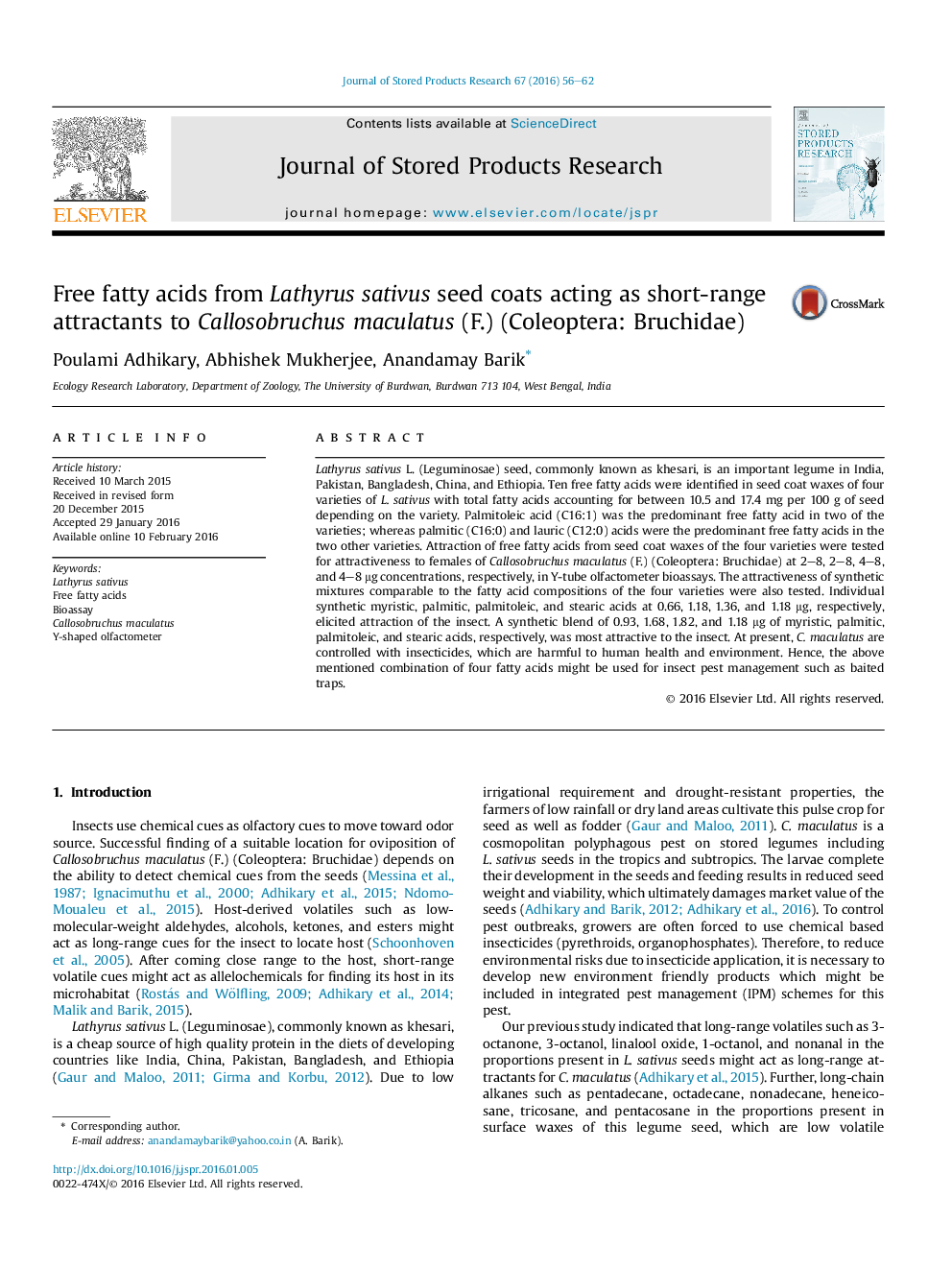| کد مقاله | کد نشریه | سال انتشار | مقاله انگلیسی | نسخه تمام متن |
|---|---|---|---|---|
| 4516964 | 1624922 | 2016 | 7 صفحه PDF | دانلود رایگان |

• Free fatty acids were identified from Lathyrus sativus seeds.
• Free fatty acids attracted the female insect, Callosobruchus maculatus.
• Bioassays were conducted in Y-shaped glass tube olfactometer.
• A blend of myristic, palmitic, palmitoleic, and stearic acids attracted the insect.
• This might be used for insect pest management programme such as baited traps.
Lathyrus sativus L. (Leguminosae) seed, commonly known as khesari, is an important legume in India, Pakistan, Bangladesh, China, and Ethiopia. Ten free fatty acids were identified in seed coat waxes of four varieties of L. sativus with total fatty acids accounting for between 10.5 and 17.4 mg per 100 g of seed depending on the variety. Palmitoleic acid (C16:1) was the predominant free fatty acid in two of the varieties; whereas palmitic (C16:0) and lauric (C12:0) acids were the predominant free fatty acids in the two other varieties. Attraction of free fatty acids from seed coat waxes of the four varieties were tested for attractiveness to females of Callosobruchus maculatus (F.) (Coleoptera: Bruchidae) at 2–8, 2–8, 4–8, and 4–8 μg concentrations, respectively, in Y-tube olfactometer bioassays. The attractiveness of synthetic mixtures comparable to the fatty acid compositions of the four varieties were also tested. Individual synthetic myristic, palmitic, palmitoleic, and stearic acids at 0.66, 1.18, 1.36, and 1.18 μg, respectively, elicited attraction of the insect. A synthetic blend of 0.93, 1.68, 1.82, and 1.18 μg of myristic, palmitic, palmitoleic, and stearic acids, respectively, was most attractive to the insect. At present, C. maculatus are controlled with insecticides, which are harmful to human health and environment. Hence, the above mentioned combination of four fatty acids might be used for insect pest management such as baited traps.
Journal: Journal of Stored Products Research - Volume 67, May 2016, Pages 56–62